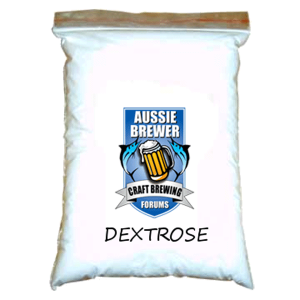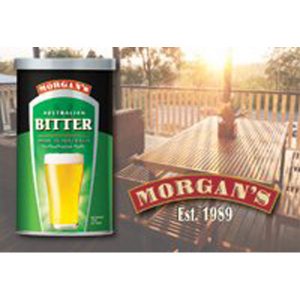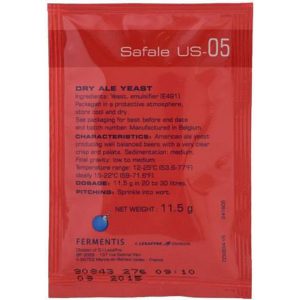Maturing your Home brew:
Short answer: Most literature state 2-6 months as an optimum time for beer to age to get the full effect of the hop flavour, as after 6 months the hop taste will start to diminish.
I love hearing stories, I love talking to people and I love to hear different ideas and theories on homebrew. Recently I have been hearing many different stories on maturing your brew. How long people do it for, methods, preferences and the difference all this makes.
I have meet people who mature the beer in total darkness, people who let it sit in the sun for a day before putting in in the fridge and people who will only mature in the fridge…..with a broken light!
While a lot of people don’t give the topic much though, it is important to know a little about and it is nice to know what effects different practices have on your beer, as it has almost as much importance on the overall flavor of your beer as the actual fermenting.
This article is less about the actual hows of maturing your beer, but more so the effects that different factors can have on it like temperature, time and exposure to light (which are the main factors contributing to the flavor of your beer after it is bottled).
Sunlight:
As most people know, beer left in the sunlight goes bad and is often called “skunky”. The most common perception is that the sunlight effects the yeast, causing it to react and give off bad flavors. This is false(we are taking about sunlight, or ultra violent rays, not heat). All commercial beer has the yeast almost entirely filtered out of it. It is actually because the hops used to flavor your beer are extremely sensitive to light. Even if exposed to light for less then an hour, beer will undergo a chemical reaction a produce a chemical called 3-methyl crotyl mercaptan . This is the chemical that gives beer that skunky taste, and believe me, once its in there you will know about it!
If you want to act smart around your mates try telling about this: It occurs when UV light penetrates a beers’ glass container and is a photochemical reaction. The (energy) strikes a cyclic (a carbon ring) ring structure derived from the hops. The ring opens up and a free radical is formed. A sulfer compound attaches to the free radical producing a skunk-like aroma.
Most supermarkets and bottle shops display the beer in brightly lit fridges. There bright, cheap, attractive and pump out ultra violent rays that can set of that chemical reaction and cause your beer to go skunky.
This is why most beer come in a brown bottle. It is to minimize the amount of sunlight exposure they receive. Beer that comes in a clear or green bottle are offered almost no protection to the sun light, and with the wrong type of beer it can go off in a matter of minutes (there have been tests that saw a clear bottle filled with a mid-strength beer go off in 15 seconds).
If you have a specified beer fridge I would recommend either change the light bulb to a non fluorescent light bulb or just turn the light off all together.
Brewers can also battle this process by using hydrogenated hop extracts instead of fresh hops, but then you’re not getting the best quality beer.
Temperature Change:
Beer wants to remain at the same temperature as long as possible. Especially home brew, without the cold conditioning process that most beer goes through before hitting the shelves. In fact beer goes stale faster in warmer conditions. This has to with the yeast,e. Its the yeasts physical reaction to the heat that causes off and often yeasty flavors. Always try to keep your beer no warmer then 25c-30c. As a general rule of thumb if you brewed the beer at 27c, try not to let it get to hotter then that (if you cant ferment beer at 30+ what makes you think you can store it at 30+!). remember your beer is not finished when it is in the bottle, it is undergoing a secondary fermentation process.
Maturing your beer at cooler temperatures ages it ‘better’. This is because of the amount chemical reactions happening to a beer whilst it is cooler is much less then that if it was at a higher temperature. Just for a test try this. Find a suitable a brew, something around 3 weeks to a month old. Try one on a Monday, make a note of its flavor, head, bitterness etc. Get two of the same brews. Put one in the fridge and one on the shelf. Sunday night put the one on the shelf in the fridge. Monday taste them both and makes notes of any differences. You will be amazed at the difference this makes.
Heat is like over-pasteurizing a beer. The heat caramelizes whatever sugars are in the beer, giving it a differently sweet taste. Heat will also greatly amplify any hint of off-flavor, like dimethyl-sulfide (one of the off yeasty flavors)
Time:
Many people wonder if there is a time limit on how long you can age your beer. The short answer is no. The beer will last an indefinite amount of time, although the flavor will change, as long as it is stored properly.
But is there a limit to how long you should age a beer before the aging has different effects or stops being so productive. I mean I have drunk a 6 year old home brew pilsner that had been in the fridge almost from birth, and they where fantastic (as you might have guessed). What many didn’t know that an extremely long fermentation period can have different effects.
Chimay blue, considered one the best beers in the world is fermented for an incredibly long time, and it isn’t what you call a regular beer. Its fruity with a touch some wine character and for your average beer drinker a little off (personally I could appreciate it, but couldn’t sit down to a whole carton….maybe the price had something to do with that though)
Just to give you an idea this is the sort of thing that can happen to a home brew (especially a highly hopped beer with lots of flavor character), so if you where after that fruity, wine character you might consider putting the beer down for an extended period.
Most literature state 2-6 months as an optimum time for beer to age to get the full effect of the hop flavour, as after 6 months the hop taste will start to diminish. Maybe this is because most people cant be bothered waiting for longer, or there is no way for a home brewer to do the exact same beer under the exact same conditions and test the difference a year or two years later.
This sort of age usually isnt acheivable for your average bottle home brew, I know of “keggers” who do it but thats only because they have lots of kegs!
Most people are well aware of how to mature your beer. Its simple really, keep it cool, keep it dark, and keep it for about a year!
I just hope that next time you bottle and think you will just leave that carton there, next to the window, whilst I quickly have a quiet few and bask in the glory of whats to come, you will think twice and be able to thank yourself a year later when you crack open a wonderfully aged brew and reward yourself with some of the best beer you have ever tasted.





